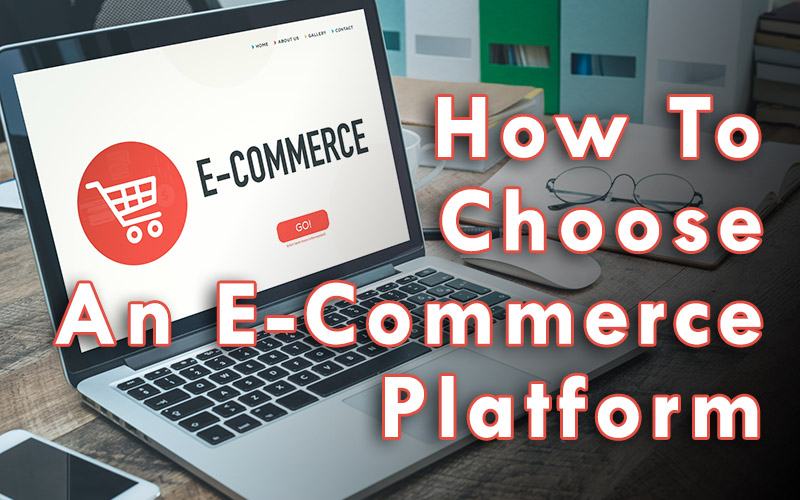How to Choose the Right E-commerce Platform for Your Online Store
Crafting a successful online store starts with selecting the right e-commerce platform. This guide breaks down the critical factors to consider, compares top platforms, and answers FAQs to streamline your decision-making process.
Introduction
The e-commerce industry is booming, with global sales projected to exceed $6.3 trillion by 2024. However, the backbone of any successful online store is its e-commerce platform. Choosing the wrong one can lead to technical headaches, lost sales, and stifled growth. This guide demystifies the selection process, helping you align your business goals with the ideal platform.
Key Factors to Consider When Choosing an E-commerce Platform
1. Assess Your Business Needs and Goals
- Product Type and Volume: A boutique selling handmade jewelry has different needs than a large electronics retailer. Platforms like Shopify excel for physical goods, while WooCommerce offers flexibility for digital products.
- Target Audience: If targeting global markets, prioritize platforms with multilingual support (e.g., BigCommerce) or multicurrency options (e.g., Magento).
- Future Growth: Ensure the platform can handle increased traffic and product lines. Scalable solutions like Adobe Commerce (Magento) cater to enterprises, while Wix suits small businesses.
2. Budget and Cost Structure
- Upfront Costs: Includes subscriptions, themes, and domain registration. For example, Shopify starts at $29/month, while WooCommerce is free (but requires hosting).
- Transaction Fees: Platforms like BigCommerce charge no transaction fees, whereas Shopify imposes fees unless using Shopify Payments.
- Hidden Costs: Plugins, custom domains, and premium support can add up.
3. Scalability and Flexibility
- Hosted vs. Self-Hosted: Hosted platforms (e.g., Shopify) manage server maintenance, while self-hosted (e.g., WooCommerce) offer full control but require technical expertise.
- Cloud-Based Solutions: Ensure uptime during traffic spikes. BigCommerce and Salesforce Commerce Cloud offer robust cloud infrastructure.
4. Ease of Use
- User Interface: Drag-and-drop builders (e.g., Wix, Squarespace) are ideal for beginners.
- Technical Skills: Platforms like Magento require coding knowledge, whereas Shopify offers a user-friendly dashboard.
5. Payment Options and Transaction Fees
- Gateway Diversity: Support for PayPal, Stripe, and Apple Pay is essential. Shopify supports 100+ gateways but charges fees for third-party options.
- Global Sales: Look for platforms with localized payment methods (e.g., Alipay for China).
6. SEO and Marketing Tools
- Built-in SEO Features: Custom URLs, meta tags, and sitemaps. BigCommerce and WooCommerce rank highly for SEO.
- Integrations: Google Analytics, email marketing tools (e.g., Mailchimp), and abandoned cart recovery features boost conversions.
7. Mobile Responsiveness
- Mobile-Optimized Themes: Ensure templates adjust seamlessly to mobile devices. Shopify’s themes are inherently responsive.
- Mobile App Management: Platforms like Shopify offer merchant apps for on-the-go store management.
8. Integrations and Add-Ons
- App Marketplaces: Shopify’s App Store and WooCommerce’s WordPress plugins extend functionality (e.g., CRM, inventory management).
- API Access: Critical for custom integrations. Magento and Salesforce offer robust APIs.
9. Customer Support
- 24/7 Availability: Shopify provides round-the-clock support via chat, email, and phone.
- Community Forums: WooCommerce and Magento have active user communities for troubleshooting.
10. Security and Compliance
- SSL Certificates: Ensure free SSL is included (e.g., BigCommerce).
- PCI Compliance: Non-negotiable for secure transactions. Most hosted platforms are PCI-compliant.
11. User Reviews and Reputation
- Case Studies: Research how similar businesses succeed on a platform. For example, Gymshark’s growth on Shopify.
- Red Flags: Check for frequent downtime or poor support reviews.
Top E-commerce Platforms Compared
| Platform | Pricing | Ease of Use | Scalability | SEO Tools | Best For |
|---|---|---|---|---|---|
| Shopify | 29–299/month | ⭐⭐⭐⭐⭐ | ⭐⭐⭐⭐ | ⭐⭐⭐⭐ | Small to mid-sized businesses |
| WooCommerce | Free (+ hosting) | ⭐⭐⭐ | ⭐⭐⭐⭐⭐ | ⭐⭐⭐⭐⭐ | Customizable stores |
| BigCommerce | 29–299/month | ⭐⭐⭐⭐ | ⭐⭐⭐⭐⭐ | ⭐⭐⭐⭐⭐ | High-growth brands |
| Wix | 23–49/month | ⭐⭐⭐⭐⭐ | ⭐⭐ | ⭐⭐⭐ | Beginners, small stores |
| Magento | Custom pricing | ⭐⭐ | ⭐⭐⭐⭐⭐ | ⭐⭐⭐⭐ | Enterprises |
Step-by-Step Selection Process
- Define Goals: List must-have features (e.g., dropshipping, subscriptions).
- Shortlist Platforms: Match features to your needs.
- Test Demos: Use free trials (e.g., Shopify’s 14-day trial).
- Calculate Costs: Include add-ons and transaction fees.
- Check Support: Ensure help is available during crises.
Conclusion
Your e-commerce platform is the foundation of your online success. Prioritize scalability, ease of use, and SEO capabilities while aligning with your budget. Start with a free trial, consult user reviews, and don’t hesitate to seek expert advice. Ready to launch? Your perfect platform awaits!
FAQ Section
Q1: What’s the easiest e-commerce platform for beginners?
A: Shopify and Wix offer intuitive interfaces with drag-and-drop builders.
Q2: Which platform is best for SEO?
A: WooCommerce (with WordPress) and BigCommerce provide advanced SEO customization.
Q3: Can I switch platforms later?
A: Yes, but migration can be complex. Use tools like Cart2Cart for seamless transitions.
Q4: Are there hidden costs?
A: Watch for transaction fees, plugin subscriptions, and custom domain charges.
Q5: What platform suits international sales?
A: BigCommerce and Magento support multicurrency and multilingual stores.
Q6: How important is mobile optimization?
A: Critical—over 70% of e-commerce traffic comes from mobile devices.
Read more Article About online Business & Entrepreneurship
